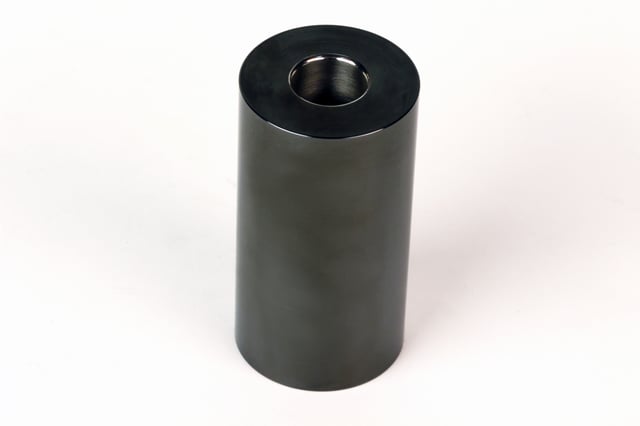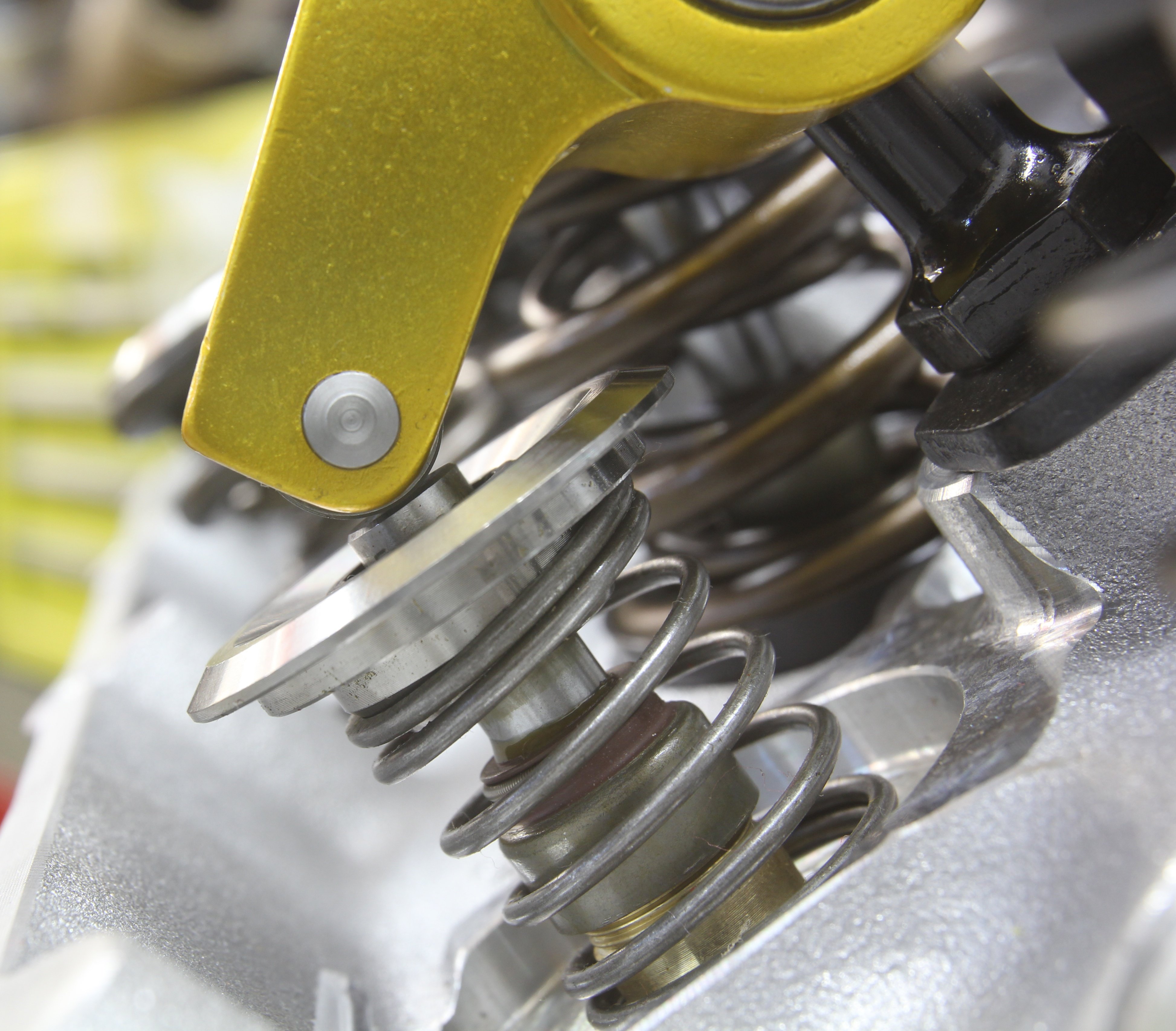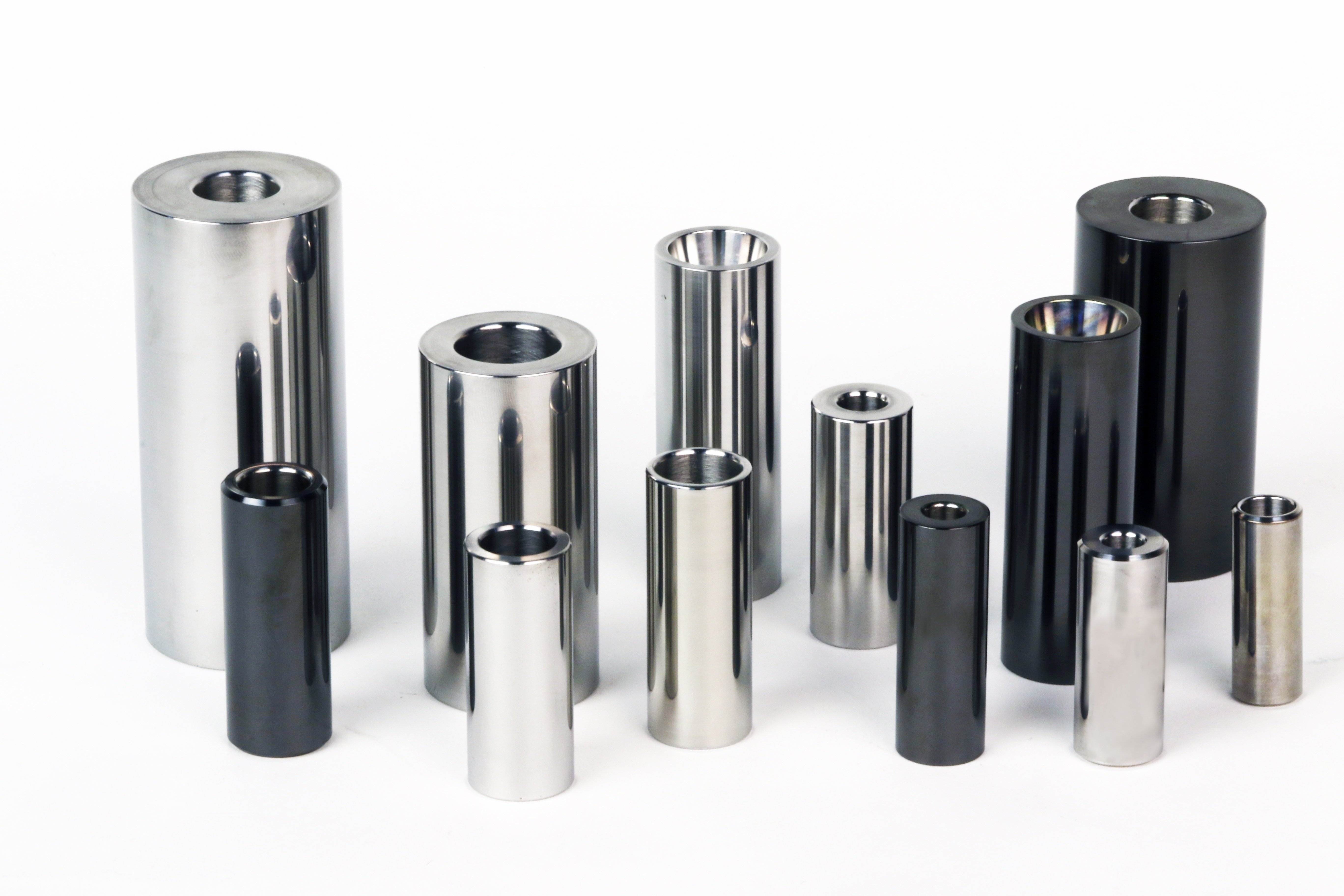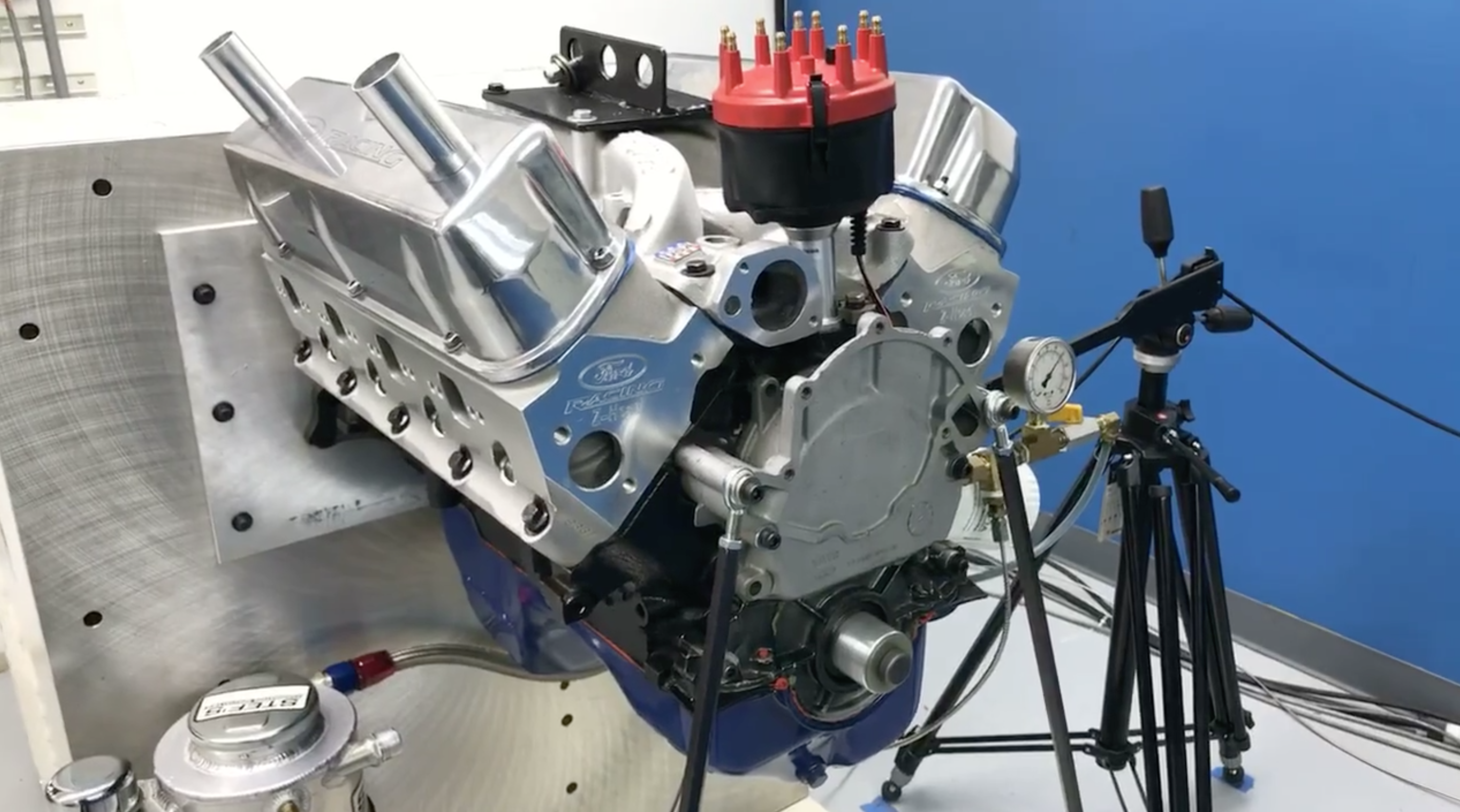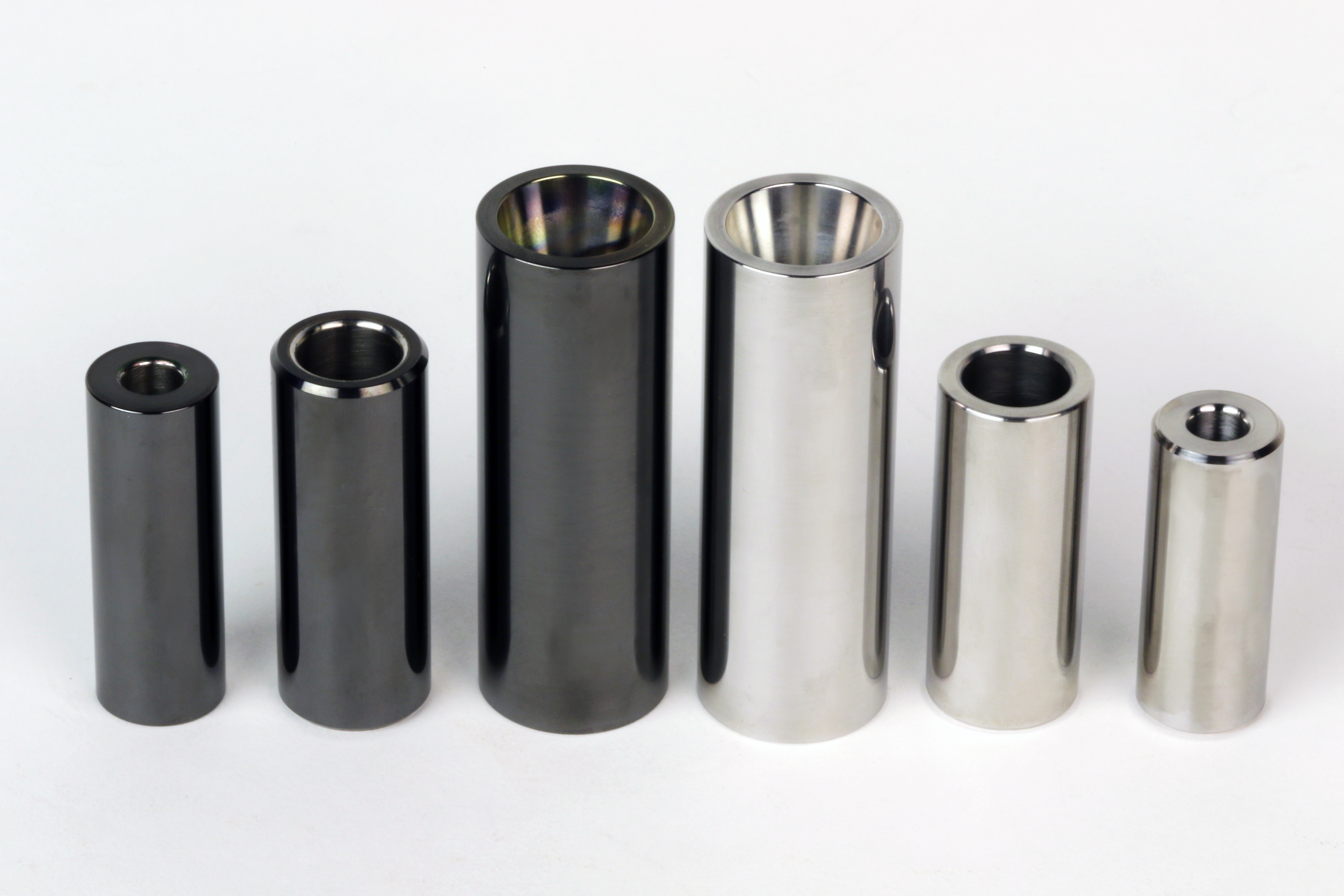In the early days of performance engines, a well built wrist pin was top of the line. Today, with modern coatings and finishing processes, wrist pin engineering goes so much further.
Not having to run a bronze bushing in the little end of a steel connecting rod is one big clue that a wrist pin with DLC coating is quite an effective combination. DLC, which stands for diamond-like carbon, is a very thin coating that not only improves the hardness of the pin material for added durability, but it reduces friction rather significantly to help free up horsepower.
“There are no downsides to DLC,” says Andy Anderson, an engineer at Trend Performance. “The only thing is a cost consideration. If you're not turning the RPM or having a problem in the pin bores, then you don't need to use it. If you use it, it's generally $250 or $300 for a set of wrist pins. But if you end up saving a set of pistons, you've paid for that coating.”
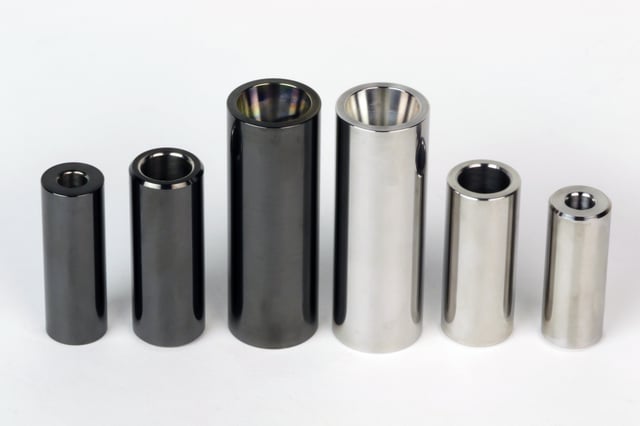
Like many motorsports innovations, DLC was first applied in the aerospace industry and then picked up by high-end motorsports teams such as Formula 1 and WEC. When companies specializing in DLC opened up shops near Charlotte, North Carolina, to serve NASCAR and Pro Stock teams, more of the racing establishment took notice.
“We were running DLC and titanium pins in Pro Stock, and the Cup races with Yates in the late ‘90s,” remembers Anderson. “We were running titanium pins when they still had qualifying motors. When NASCAR got rid of qualifying motors, we had such good luck with the titanium, we started coating steel pins. That really caught on and by the end of 2000, everybody was using coated steel pins.”
The secret to DLC’s remarkable properties is the element carbon, which as everyone knows is atomic number 6 on the periodic table. Carbon is rather unique in that it can bond to itself to make diverse compounds through different crystal-structure arrangements of its molecules. On opposite ends of the carbon scale are diamonds and graphite. Known as the hardest substance known on earth, diamonds are the result of a rather rigid three-dimensional carbon structure that delivers hardness and high durability. With graphite, the carbon molecules are layered, and these atomic planes shear easily to give graphite its lubricating qualities.
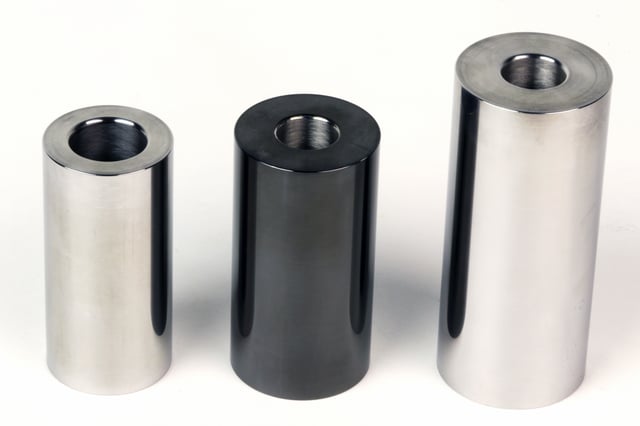
DLC is basically a synthetic fusion of these two carbon materials that don’t seem to have much in common other than their carbon molecules. A DLC coating is exceptionally hard yet very slippery. Like graphite, it reduces friction, and like diamond it offers high strength and thermal conductivity.
“It’s applied to the wrist pin with a process called plasma enhanced chemical vapor deposition (PECVD). Basically, it's in a vacuum chamber with a chemical gas introduced,” says Anderson. “An electrical charge creates a reaction at the surface of the metal, which forms a carbon and diamond crystalline structure.”
PECVD is used to apply the DLC coating because lower temperatures are required than a standard CVD process. These temperatures may come close to the tempering limit of some metals and possibly upset the fatigue factor. For example, 9310 alloy steel tempers around 300 F, and the PECVD application temperature for DLC is around 400 degrees at the reacting surface, so there is a possibility of DLC slightly changing the structure of the alloy.
“I did see a little when we started working with the DLC, because the temperature it goes on is around 300 to 400 degrees Fahrenheit. We did detect a little bit of change in the 9310 pins, but it was down in the micron range. It changes the material only at the microscopic surface. It still helped to eliminate galling in the piston bores and helped them turn more RPM,” says Anderson.
Although DLC could be applied to any wrist-pin material, it’s generally available only on the high-end steels used in race engines, because those alloys have a higher tempering temperature. Trend offers DLC on its 4130 G-series, H13 tool steel, Maraging steel and TP1 lines because they’re recommended for high-stress, high-RPM applications.
“If you're running an engine that you're going to exceed 8,500 rpm and start hitting up to 9,000 rpm, then you're probably going to look at a DLC coating,” says Anderson.
One exception is a Top Fuel team. Due to the tremendous cylinder pressures, piston wrist pins often bend after only one or two runs, so some teams often question the added cost of DLC coating for such a limited lifecycle. However, other teams see the benefit in reducing galling or other problems with the coating.
The DLC coating is applied to a thickness of 1.5 to 3 microns, the latter equating to .000118-inch. The thickness depends on the amount of time in the PECVD chamber. The pins don’t have to be slightly undersized before the coating process.
“Generally most customers that are using the DLC-coated pin are honing the piston bores to a specified clearance, so they can use them slightly over size without any problem,” notes Anderson. “The general rule is that DLC can use less clearance. Generally I see them using 10 to 20 percent less clearance.”
The friction-reducing properties of DLC are still the motivating force for its use. One of the early versions that Anderson worked with was called Casidium developed by Anatech, which is now IHC (Industrial Hard Carbon). Many new companies have developed their own formulas and application processes. In the beginning, it didn’t take long to demonstrate DLC’s effectiveness.
“We developed a rub test,” recalls Anderson. “We spun a pin at 1,200 rpm, and at the time, we were running bushings in the rods. So we pressed the bushing material against the OD of the pin.”
Anderson says a nitrided pin would last approximately 90 seconds with a 50-pound load before galling. The DLC-coated pin ran for two hours.
“That's when we knew that we had something,” adds Anderson. “We just put in the pin with the DLC coating and turned it on. It would just sit there and run without lubrication.”
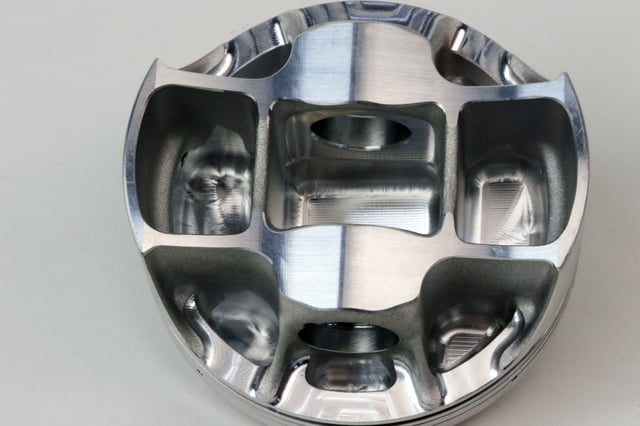
Advanced piston designs that support shorter wrist pins combined with higher RPM levels almost necessitate DLC coating. These new pistons have a box-strutted construction that reduces the amount of skirt area contacting the cylinder wall. This design is achieved by moving the pin bosses closer together and shoring up the overall strength of the piston with carefully placed struts. And one of the resulting benefits is a shorter, lighter wrist pin.
“When I first started doing DLC with steel, it was basically a .927-inch diameter, 2.750-inch-long pin. The problem at the time was the NASCAR teams couldn't turn the RPM that they wanted,” says Anderson. “Every time they started turning upwards toward 9,000 RPM, they would start galling in the pin bores. The DLC coating then allowed them to surpass that number. Then the smaller pins came along later with the inboard piston designs.”
As mentioned earlier, a bronze bushing is not required in a steel rod that is mated to a DLC-coated pin. The lubricity and hardness of the DLC prevents galling or other damage to the pin by the steel bore on the little end of the rod. For those engine builders running high crankcase vacuum, DLC pins also help alleviate some fears of periodic oil starvation.
“I’ve had racers who purchased just one pin with DLC coating because they had trouble galling the pins in just one cylinder. Instead of fixing the problem they coated one pin,” says Anderson, noting that band-aid solution is evidence that DLC works. “If you have an issue where there’s too much heat or you don’t get enough oil to the pin you can potentially save the engine. How much is worth to you not to fall out of a race because of a wrist pin problem?”


